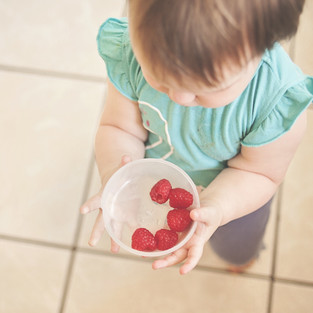Independence at Home
- Ferne van Zyl

- Sep 17, 2018
- 4 min read
Updated: Feb 12, 2020

Implementing the principles of the Montessori approach at home can benefit your child greatly. A few suggestions to get you started are listed below.
Include your child:
Allow them to join you in what you are doing. Remember they are learning about life itself and the independence and self-confidence to carry out simple tasks for themselves:
·Preparing food is an occasion for education
Provide a small cutting board, safe knife, serving tongs and small spreading knife etc. for the following activities:
· Washing, peeling, grating, cutting fruit and vegetables
· Shelling peas
· Peeling & slicing hard-boiled eggs
· Lunch/snack from a tray of things you have put out –Rye “Cruskits”/ bread, butter, fruit, cheese etc
· Setting their own or the family table
It is truly amazing how much more willing children are to eat well when they have had a hand in preparing their food!
Cleaning the house
Little children love to do what they see you doing. Activities that can be set up with ease are: Dusting, sweeping, mopping, polishing washing windows.
Laundry
Provide a small laundry basket, low wash-line, pegs etc. tasks they can be included in:
· Carrying laundry basket
· Sorting into piles and placing the items of clothing into the washing machine one by one
· Handing items of their own clothing on a wash-line
· Folding & packing away.
Shopping
Take children to the supermarket. Involve them in the process as they can:
· Place items in trolley as you name them
· Carry a little shopping basket into which they put a few small things you need
Gardening
Children love being in a natural environment, try a few of these activities:
· Pulling out weeds
· Watering the plants
(with a small watering can they can walk back and forth to a tap filling the can over and over again happily for hours)
· Digging holes
· Sweeping up dirt
Remember always to:
· Name the item – the implements, the vegetables, the clothes, whatever you are using and dealing with.
· Demonstrate the activity with slow and deliberate actions using minimal language while showing actions.
…… and always in the spirit not of attempting to “teach” them, but rather to give them the opportunity to observe and imitate in a supportive, loving environment.
Use child sized utensils and equipment
Offer a simple and ordered environment, using the following essential aids:
· Stools
A lightweight, well balanced 2 step kitchen & bathroom; a 1 step stool for the toilet and climbing into the bath, a dressing stool in the bedroom and or bathroom to enable your child to operate more easily in the adult sized environment.
· Shelves
· Aim to have children’s toys, art and craft, puzzles, etc. laid out on low shelving rather than toy boxes or trunks (make it almost impossible for children to easily find things and difficult for them to pack away). You can even have a small dustpan and broom, cleaning cloths etc. for tidying up afterwards.
· Rotate toys
It is far better to have just a few toys out than an overflowing, jumbled, cluttered mass. A good idea is to put some toys away and rotate them monthly (or as dictated by the children’s interest). Doing so means that there is also always something “new” to play with.
· A ‘work table’
Have a child sized table and chairs where they can work.
Locate items they use within their reach
· Access to crockery & cutlery for food preparation, table setting and snack/meal times.
· HEALTHY food and drink (e.g. fruit, yogurt, water, cereal) - on low shelf in the pantry and fridge . A limited specific number of treats / day can also be made available.
· Access to cleaning items such as cleaning cloths or for spillages.
Provide appropriate and accessible clothing:
· Buy practical clothes your child can handle themselves, e.g. Velcro fasteners, easy zips, elasticized waists, pull on tops. Avoid braces, buttons and especially jeans at this age. Collaborative dressing should be introduced from when your child can sit. If clothes are kept simple self- dressing skills will increase daily. Demonstrating with slow and deliberate movements with minimal language will assist in this process!
· Have open shelves & low hanging rail. If they have lots of clothes, the rotation technique mentioned above can work well. Alternately, you can layout only 2 or 3 items the night before on a bed or shelf or rack. Offer limited choices and let your child choose what to wear.
Be prepared!
Parents are the first and remain the most important educators of their child. Therefore, providing for your child’s growing developmental needs and increased skills at each stage is vital.
Recommended further reading
Between Parent and Child (Dr. Haim Ginott)
How to Talk so Kids will Listen and Listen so Kids will Talk (Faber & Mazlish)
Liberated Parents, Liberated Children (Faber & Mazlish)
Siblings without Rivalry (Faber & Mazlish)
Brain Rules for Babies (John Medina)
Understanding the Human Being, the importance of the first three years of life (Dr S. Montanaro)
The Child in the Family (Maria Montessori)
At Home with Montessori (Patricia Orti )
Look at the Child (Aline D. Wolf)
The World of the Child (Aline D. Wolf)
Education for a New World (Maria Montessori)





























Comments